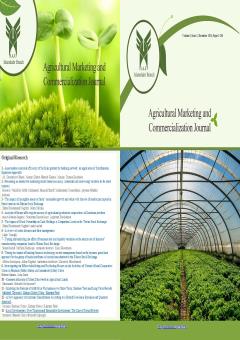-
-
-
Open Access Article
1 - Identifying the Indicators and Components of Human Resource Management Based on Knowledge Management and Prioritizing Them in the Executive Organs of the City of Sari
Mahsa Shah Moradi Sanjar Salajegheh Aflatoon Amiri Masoud Pourkiani Ayob Sheykhi -
Open Access Article
2 - Providing a Lean Leadership Model (A Comparative Study of Islamic Azad Universities and State Universities of Fars Province)
Nasir Akbari Masoud Pourkiani Saeed Sayadi Sanjar Salajegheh Ayob Sheykhi -
Open Access Article
3 - Presenting A Model of the Social Factors Effective in the Service Quality of the Municipalities of Mazandaran
Hamed Enshaei Hamdollah Manzari Tavakoli Sanjar Salajegheh Masoud Pourkiani Hojat Babaei -
Open Access Article
4 - Explaining the Relationship Between the Personality Traits of Policymakers and job Motivation Based on Jihadi Management in Revolutionary Institutions with a Structural Equation Modeling Approach
Ali Raesi Hamdollah Manzari Tavakoli Mohammad Jalal Kamali Sanjar Salajegheh Mahdi Mohammad Bagheri -
Open Access Article
5 - Investigating the Factors Related to Measuring the Public Services Quality in the Public Sector with Service Delivery Processes
Ali Javidi Sanjar Salajegheh Masoud Pourkiani Saeed Sayadi -
Open Access Article
6 - Identification and Investigation of the Status of the Cultural Policy-Making Pattern’s Indicators Based on Islamic Management Philosophy in District Eight’s Payam-e-Noor Universities
Fatemeh Shahabi Nejad Hamdollah Manzari Tavakoli Mohammad Jalal Kamali Sanjar Salajegheh Hamid Reza Molaei -
Open Access Article
7 - Explaining and Designing the Model of Internal Factors of Strategic Human Resource Planning Based on the Recruitment and Adjustment of Knowledge-Based Employees (Case Study: National Development Fund)
Haniyeh Fardmanesh Saeed Sayadi Sanjar Salajegheh Ayob Sheykhi Mohammad Jalal Kamali -
Open Access Article
8 - Identifying the Components of Organizational - commercial health and Examining their Status in Fars University
Mohsen Jabolghah Sanjar Salajegheh Saeed Sayadi Ayob Sheykhi -
Open Access Article
9 - Designing the Pattern of Administering Reform Policies in the Islamic Republic of Iran`s Administrative System
Shabnam Vaziri Sanjar Salajegheh Farzaneh Beigzadeh Masoud Pourkiani -
Open Access Article
10 - Identifying the Indicators of Managers' Competency and Investigating Their Status in Iran Insurance Branches
Hamid Nemati Hamdollah Manzari Tavakoli Sanjar Salajegheh Masoud Pourkiani Ayob Sheykhi -
Open Access Article
11 - Explaining Human Resource Strategies and Talent Management of Government Organizations in Iran and Presenting a Desirable Model
Sedigheh Hasani Ahmadiyeh Alireza Manzari Tavakoli Sanjar Salajegheh -
Open Access Article
12 - Studying the Status Organizational Health in Medical Universities of Kerman
Jamileh Rayani Hamdollah Manzari Tavakoli Sanjar Salajegheh Zahra Shokooh Samaneh Mehdizadeh -
Open Access Article
13 - Identifying the Components of Professional Ethics and Examining Their Status in the Social Security Organization
Abdolreza Soltani Nezhad Alireza Manzari Tavakoli Sanjar Salajegheh Masoud Pourkiani -
Open Access Article
14 - A Model for Factors Involved in Human Resource Productivity in the Affiliated Offices of a Government Organization
Mehdi Sadeghi Fard Saeed Sayadi Masoud Pourkiani Sanjar Salajegheh Hojat Babaei -
Open Access Article
15 - Identifying the Components of Organizational Culture in the - Commercial Refah Bank
Hossein Shabani Masoud Pourkiani Sanjar Salajegheh Saeed Sayadi Hojat Babaei
List of Articles Sanjar Salajeghe
-
The rights to this website are owned by the Raimag Press Management System.
Copyright © 2021-2025


